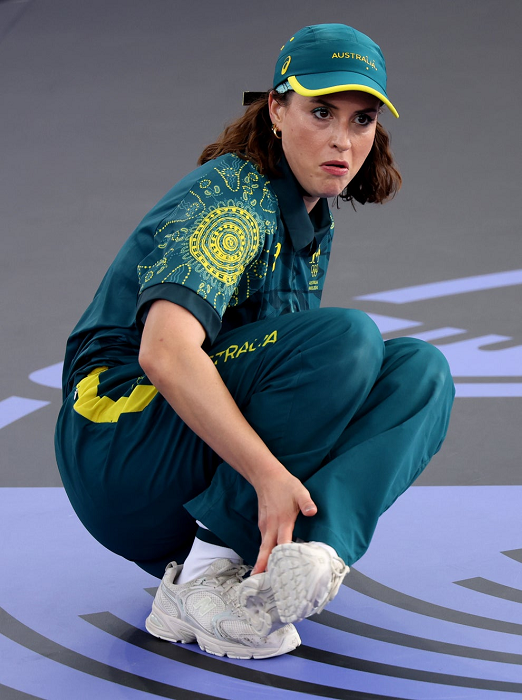
In a groundbreaking moment at the Paris Olympics, breaking made its debut as an official sport, showcasing the eclectic mix of competitors drawn to this street-dance phenomenon. Among them was Dr. Rachael Gunn, better known as B-girl Raygun, a 36-year-old cultural studies professor from Sydney, Australia, who brought her own flair to the competition.
While her younger rivals donned the typical streetwear associated with breaking—baggy pants, bandanas, and crop tops—Gunn stood out in her green Australian Olympic uniform, embracing her role as both an academic and a breaker. A former ballroom dancer with a PhD, she was fully aware that she might seem out of place in a field dominated by seasoned breakers and world champions.
Gunn’s performance was a mix of creativity and playfulness. She skipped onto the stage, flexed her muscles, and performed moves like a kangaroo hop, a nod to her homeland. She executed a crab-walk and attempted a handstand, but her routine lacked the acrobatic power moves that typically wow the judges. As expected, she lost all her matches, each by a score of 18-0.
Despite the defeat, Gunn’s Olympic experience was nothing short of exhilarating. “What a stage, what an arena, what a crowd,” she reflected after her performance. “I’m so grateful for the opportunity.”
Online, reactions were mixed. Some critics questioned her selection as Australia’s representative, while others appreciated her unique contribution to the event. Gunn herself remained unfazed, highlighting the significance of breaking’s inclusion in the Olympics. She believes the sport’s diversity and its ability to explore the body’s potential make it a valuable addition to the Games.
While breaking’s future in the Olympics is uncertain—it’s not slated for the 2028 Los Angeles Games—Gunn’s participation underscored the sport’s global reach and the different ways individuals can interpret and perform this dynamic dance form.






Be First to Comment